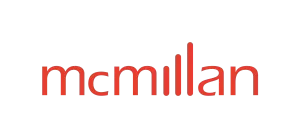- with Finance and Tax Executives
- in United States
- with readers working within the Business & Consumer Services, Environment & Waste Management and Metals & Mining industries
Across Canada, the federal and provincial governments continue to increase regulation of per- and polyfluoroalkyl substances ("PFAS") in tandem with scientific findings regarding their widespread presence in the environment, their slow rate of breakdown, and their potential health impacts. The introduction of contaminated sites and drinking water standards as well as a planned phase out of a number of common industrial and consumer applications are examples of these progressive legislative changes.
While much discussion is focused on phasing out PFAS from the economy and the various proposed changes to legislation, the practical implications of increasing regulation on the day-to-day operations of businesses are rarely discussed. This bulletin aims to address this gap, providing an overview of developments in PFAS regulation and standards across Canada coupled with a discussion of their implications for Canadian businesses.
What is PFAS?
PFAS are a group of thousands of chemicals used in a vast array of consumer and industrial products, including fire-fighting foams, cosmetics, textiles, and electronics. They include and are often confused with less well-known but pervasive compounds such as Perfluorooctane Sulfonate ("PFOS") and Perfluorooctanoic Acid ("PFOA"). Collectively, they are known as "forever chemicals" because, once present they persist in all manner of products and the environment for long periods of time.1 Their more recent discovery in municipal drinking water supplies has been the catalyst for a lot of the regulation we are now seeing in both Canada and elsewhere. The National Health and Nutrition Examination Survey has measured PFAS in blood in the United States population since 1999 and has found that nearly all individuals living in the United States have PFAS in their blood.2 Similarly, Canadian human biomonitoring surveys have found that certain PFAS (such as PFOS and PFOA) are present in "almost 100% of the Canadian population (in blood)".3
There are two types of developing PFAS regulation in Canada: (1) prohibitions and other restrictions of PFAS entering the Canadian market and in various products and applications; and (2) the addition of PFAS to contaminated sites and drinking water standards.
PFAS Phaseout and Prohibitions
Overview of Regulations
In March 2025, the federal government issued two publications to advance its efforts to regulate PFAS, which are discussed in our bulletin here. What is relevant for this discussion is the phased in prohibition of the use of PFAS in firefighting foams (not already banned), followed by various consumer products (including cosmetics, natural health products, non-prescription drugs, food packaging materials, paints, coatings adhesives and sealants, cleaning products, textiles and ski waxes), and finally industrial uses (including fluorinated gas, military and transport applications, prescription drugs, medical devices, industrial food contact materials, industrial sectors such as mining and petroleum).
PFAS Use Restrictions
These PFAS regulations will reshape many sectors by restricting the manufacture, import, use, and sale of PFAS‑containing products – directly targeting businesses reliant on these substances in their operation. Given the ubiquity of PFAS in industrial and consumer goods, adopting PFAS alternatives could entail considerable operational and design changes, including to a business's supply chains.
For a manufacturer, this may mean replacing PFAS with an alternative or removing it completely from products and operations, which could involve: (a) sourcing alternative parts or ingredients for a product; (b) redesigning the product completely to remove PFAS or accommodate an alternative; and (c) changing manufacturing processes or replacing manufacturing equipment. These are significant changes to a manufacturer's products and operations that in almost all instances cannot be done quickly and without significant research and testing before implementing a change.
For importers, distributors and retailers, they will need to gather significant information from their suppliers' products to understand whether there is PFAS in the products they are introducing to the Canadian market. This can be a burdensome especially where the company is not the manufacturer of the products or the products are being supplied by companies whose products are not subject to similar regulations. Importers, distributors and retailers typically occupy distant tiers of the supply chain, hampering their ability to access product intelligence – especially when they lack a direct commercial relationship with the manufacturer. Even where direct commercial ties exist with the manufacturer, information may not be readily available as manufacturers often source parts or products from third parties, who in turn may have sprawling supply chains. This information gap is further intensified by the complexity of supply chains, sometimes crossing oceans and involving a long list of suppliers to contribute to a single part of a final product.
Assessing Supply Chains
Companies with control over the design and manufacture of their products should determine where there is PFAS in their products, processes and supply chains and, where identified, consider whether alternatives are available for substitution, a redesign is required, or PFAS can be removed without altering the product or process. While this is often an expensive and time-consuming process, the first phase of regulations are not expected to be published until Spring 2027 providing businesses with some lead time on understanding the PFAS content (if any) in their products and processes and to begin substituting and redesigning where possible.
Manufacturers, importers, distributors and retailers should initiate discussions with their suppliers to similarly understand where there might be PFAS in products they handle and use in their operations. The phase in of these regulations allows time for businesses to assess their supply chains to ultimately ensure compliance when the regulations come into effect.
In a helpful twist, the Canadian government issued a notice under the Canadian Environmental Protection Act requiring reporting on PFAS above certain thresholds manufactured, imported or used in Canada, which was due on January 29, 2025 (but extended to July 29, 2025).4 For many companies, compliance with this requirement was both a challenging endeavour for the reasons discussed above as well as their first look into whether there was any PFAS in their products or supply chain. Some confirmed there were none, while others identified PFAS, including its type, quantity and where they were being used. The latter therefore have already begun (or even completed) the exercise of gathering the data necessary to undertake the PFAS assessment and internal phase out discussed above.
Contaminated Sites & Drinking Water PFAS Standards
Overview of Regulations
The second type of increasing PFAS regulation in Canada is the addition of PFAS to contaminated sites and drinking water standards. These standards are limited to specific PFAS compounds and set the permitted concentrations of PFAS to meet regulated contaminated sites standards when remediating a property and in drinking water.
The current status of contaminated sites and drinking water standards in Canada are as follows:
- Canada's latest standards for PFAS in drinking water issued in August 2024 include 25 PFAS compounds.5 Canada also has environmental quality guidelines for PFOS.6
- British Columbia leads Canada in PFAS regulation in terms of scope and timing for incorporating these substances into its standards. Its Source Drinking Water Quality Guidelines covers two types of PFAS: PFOS and PFOA.7 B.C.'s Contaminated Sites Regulation further regulates PFOS, PFOA and perfluorobutane sulfonate.8 B.C.'s Design Guidelines for Drinking Water Systems also classify PFAS as an "emerging contaminant."9
- Ontario published Toxicity Reference Values (TRVs) for PFOS and PFOA in its Human Health TRVs Selected for Use at Contaminated Sites in Ontario in May 2021.10 Ontario's Ministry of the Environment, Conservation and Parks also monitors PFAS levels in drinking water and the environment and has funded research into novel treatment technology that could reduce PFAS contamination in groundwater.11
- Quebec has taken steps to address PFAS contamination in biosolids, including through its March 2025 Fertilizing Residual Materials Management Code, which goes beyond Canadian Food Inspection Agency standards, further limiting permissible PFAS (including PFOS and PFOA) concentration in biosolids.12
- Alberta has implemented standards for PFOS and PFOA in both its Tier 1 and Tier 2 Soil and Groundwater Remediation Guidelines.13
- Atlantic Provinces: Newfoundland and Labrador, Nova Scotia, New Brunswick, and Prince Edward Island have adopted the Atlantic RBCA Environmental Quality Standards for the assessment and remediation of potentially contaminated sites, which address PFAS in groundwater and soil.14 Prince Edward Island has also launched a comprehensive testing program for PFAS in drinking water.15
- Yukon has proposed a new Contaminants Regulation, which will incorporate standards for PFAS. This new regulation will replace the territory's current Contaminated Sites Regulation and Spills Regulation.16
Where regulated PFAS compounds are present on a site, the party tasked with the remediation of a property may be required to undertake further and more complex, expensive, and time-consuming remediation work in order to meet the applicable standards or obtain environmental approvals, such as records of site condition and other types of remediation approvals and filings with the local environmental regulator. Such remediation projects can present a challenge given the "forever chemical" nature of PFAS which can make these properties particularly difficult or impossible to remediate due to technological limitations and financial challenges.
While some remediation projects take place on properties that have designated potable water, thus requiring remediation of groundwater or surface water to meet drinking water standards (in addition to soil and/or groundwater remediation standards), the implications of adding PFAS compounds to drinking water standards reaches much farther than individual property remediation projects.
Implications for Municipalities & Small Communities
Municipalities are mainly responsible for the management, treatment and distribution of drinking water in their jurisdictions. Where PFAS is added to provincial or municipal standards, treatment may require additional equipment, testing protocols and staff to ensure compliance. Similarly, rural and small communities often operate their own drinking water treatment systems, which would have even less resources for new equipment to address PFAS compounds in their drinking water sources.
Notably, more restrictive standards for PFAS levels in drinking water could increase costs for municipally operated drinking water systems since current water treatment methods do not effectively eliminate PFAS, and technologies which can treat drinking water for PFAS remain unproven and expensive.17 As these changes are mainly implemented at the provincial level, municipalities need to plan ahead to ensure they do not lag behind meeting PFAS requirements and implementing necessary upgrades.
Implications for Businesses
Many industrial operations involve the discharge of wastewater to municipal storm or sanitary sewers. The discharge of wastewater to storm and sanitary sewers are governed by local by-laws that provide what contaminants are permitted to be discharged to the sewer systems and in what concentrations. Where a business intends to discharge wastewater in excess of the by-law standards, they are required to obtain permits issued by, or to enter into agreements with, the municipality authorizing these discharges in exchange for the payment of fees to fund the additional treatment costs incurred by the municipality and regular sampling to ensure compliance. Depending on the nature of the operations and quality of the wastewater generated, it is common for industrial operations to sample and treat their wastewater on site before discharging to storm or sanitary sewers to ensure compliance with permitted contaminant concentrations pursuant to applicable by-laws, permits or agreements.
As the trend towards increasingly adding PFAS substances to federal and provincial contaminated sites and drinking water standards continues, municipalities will similarly need to update their by-laws and systems to address these new standards. Businesses should therefore monitor changes to sewer standards to the extent they are currently or plan to discharge wastewater to the municipal system to ensure they are prepared to implement additional sampling parameters and upgrades to treatment systems to meet these requirements.
On the contaminated sites front, companies will often not be aware of what contaminants are at issue in their remediation project until it is well underway. While the presence of PFAS should not change redevelopment plans for a site in most instances, with the addition of PFAS to provincial contaminated sites standards, companies may increase costs and limitations associated with the planned remediation work, the likelihood of ongoing management obligations post-remediation, and the complexity of obtaining environmental regulator approvals. Being aware of the challenges with remediating PFAS contaminated sites at an earlier stage can assist companies in properly budgeting for the necessary scope of work and avoiding project delays.
Takeaway
The increasing regulation of PFAS in Canada requires businesses to conduct due diligence and adapt, including by understanding the presence of PFAS in their products and supply chains, and exploring PFAS-free alternatives. The phased prohibition of PFAS in various products and applications, along with the addition of PFAS to contaminated sites and drinking water standards, will require many businesses to make substantial operational changes.
Overall, while the regulation of PFAS aims to protect public health and the environment, it will necessitate careful planning, investment, and collaboration across industries to ensure compliance and minimize disruption to business operations. Businesses that proactively address these challenges will be better positioned to navigate the evolving regulatory landscape and maintain their competitive edge. If you have questions about how increased Canadian efforts to regulate PFAS could affect your municipality or business, our Environmental Law Group would be pleased to discuss.
Footnotes
1 Government of Canada, "Per- and polyfluoroalkyl substances (PFAS) and your health" (Last Updated 28 February 2025).
2 Agency for Toxic Substances and Disease Registry, "Fast Facts: PFAS in the U.S. Population" (12 November 2024).
3 Government of Canada, "Draft state of per- and polyfluoroalkyl substances (PFAS) report" (May 2023).
4 Canada Gazette, Part 1, Volume 158, Number 30, July 27, 2024, Notice with respect to certain per- and polyfluoroalkyl substances (PFAS).
5 Government of Canada, "Objective for Canadian drinking water quality – per- and polyfluoroalkyl substances" (09 August 2024).
6 Government of Canada, "Canadian Environmental Protection Act, 1999 federal environmental quality guidelines perfluorooctane sulfonate (PFOS)" (June 2018).
7 British Columbia Ministry of Environment and Climate Change Strategy, "Source Drinking Water Quality Guidelines" (2020).
9 British Columbia Ministry of Health, "Design Guidelines for Drinking Water Systems in British Columbia" (Last Updated January 2024) at 256.
10 Supra, note 8.
11 Government of Ontario, "Minister's Annual Report on Drinking Water (2024)" (16 December 2024).
12 Supra note 8; Environmental Science & Engineering Magazine, "PFAS concerns shape Quebec's new biosolids code" (21 March 2025).
13 Government of Alberta, "Alberta Tier 1 soil and groundwater remediation guidelines" (Last Updated 27 June 2024); Government of Alberta, "Alberta Tier 2 soil and groundwater remediation guidelines" (Last Updated 27 June 2024).
14 Supra, note 8
15 The Globe and Mail, "PEI only province openly following Health Canada guidelines for toxic 'forever chemicals'" (Last Updated 30 May 2025).
16 Government of Yukon, "Proposed Contaminants Regulation discussion paper to facilitate stakeholder engagement" (May 2024).
17 CBC News, "Canada wants cities to start filtering toxic forever chemicals from drinking water, but that's no easy feat" (29 July 2025).
The foregoing provides only an overview and does not constitute legal advice. Readers are cautioned against making any decisions based on this material alone. Rather, specific legal advice should be obtained.
© McMillan LLP 2025







